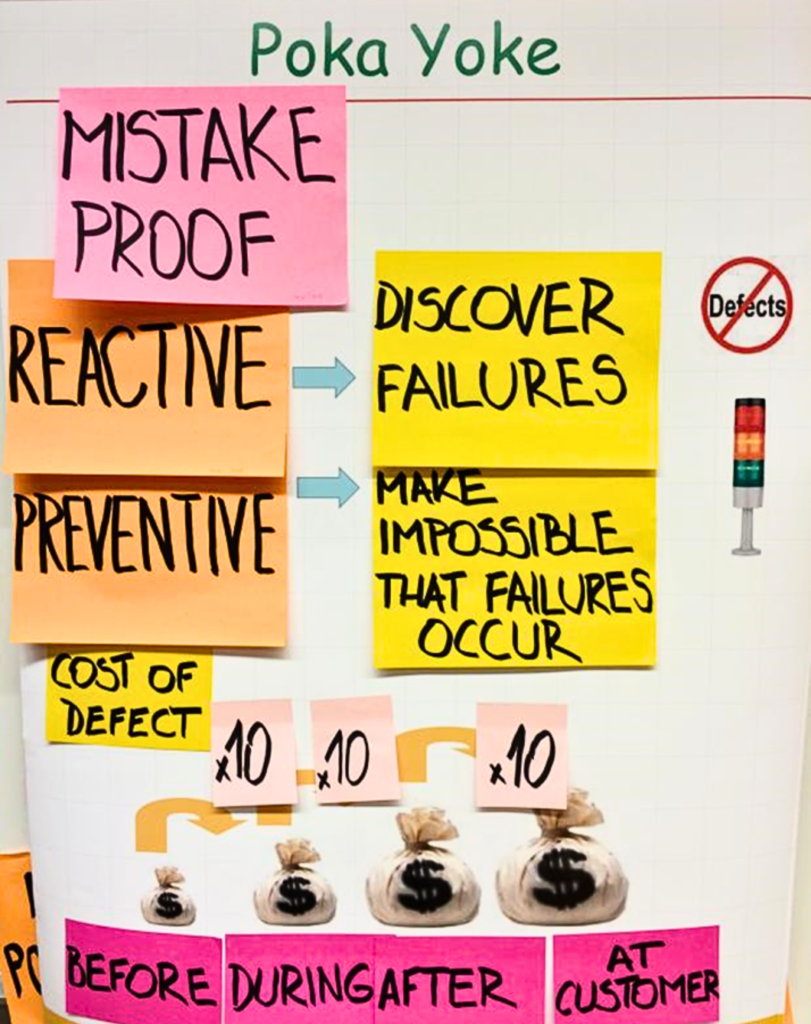
Lean Six Sigma, also known as Continuous Improvement (CI), is a concept that can be interpreted in various ways depending on the perspective of those discussing it. However, the core understanding remains consistent: it aims to enhance processes for greater efficiency and effectiveness. The integration of Lean and Six Sigma brings forth a powerful synergy.
Lean methodology focuses on waste reduction and the identification of less obvious sources of inefficiency. An illustrative model for this is the Timwood framework, an acronym representing seven types of waste: transport, inventory, motion, waiting, overproduction, overprocessing, and defects. An additional ‘s’ is often appended to signify the underutilization of human skills. Some interpretations even propose a ninth waste category, encompassing factors like behavior, risk, poor supplier quality, and ineffective metrics.
The picture is from Flip Chart that I used during my CI workshop
Six Sigma adopts a project-oriented approach centered around data-driven strategies aimed at achieving flawless quality by eradicating defects. The DMAIC framework (Define, Measure, Analyze, Improve, Control) lends a structured project-like structure to Six Sigma endeavors.
Both Lean and Six Sigma boast toolkits that are well-documented and readily available. The synthesis of these methodologies under the banner of Continuous Improvement is where the real magic happens. Depending on the specific context and timeframe, appropriate tools are selected and applied to unearth the root causes of problems, devise solutions, and chart an action plan. The pivotal criterion here is identifying actions that yield the highest return on investment.
A notable Lean tool that is close to my heart is Poka-Yoke, also known as mistake-proofing. This technique holds particular significance for me, as it played a pivotal role in my leadership of the Continuous Improvement team and in conducting awareness workshops for first and second-tier operational leaders. Poka-Yoke entails designing processes and systems that preemptively thwart errors and defects. An impactful visual aid that resonated with many was the depiction of defect-related costs escalating by factors of 10, 100, and even 1000 times as they progress through production and reach the customer. This stark portrayal underscores the urgency of error prevention and commendably recognizes those who champion this cause.
The common scenario used during training is where workers must interconnect diverse electrical wires and connectors to ensure seamless operation of an electrical system. A Poka-Yoke solution is implemented by employing connectors of varying shapes and color codes, each corresponding to a specific function or system, thereby minimizing the likelihood of errors.
A contemporary instance of Poka-Yoke in action is the employment of barcode scanning technology. This innovation validates or rejects via a signal when a product is selected for a specific order in a fulfillment center or when a medication is prescribed for the accurate patient in a hospital setting.
It’s important to acknowledge that neglecting errors not only translates into financial harm when rectified in later stages of production but can also culminate in tragic events, as exemplified by the incident involving Oceangate’s Titan submersible.
Lean Six Sigma, when harnessed together under the umbrella of Continuous Improvement, represents a holistic approach to process refinement. By leveraging a repertoire of tools and methodologies, organizations can proactively steer clear of pitfalls, optimize their operations, and ultimately attain sustained success.
Author: Ion Ilovan, 09 August 2023
